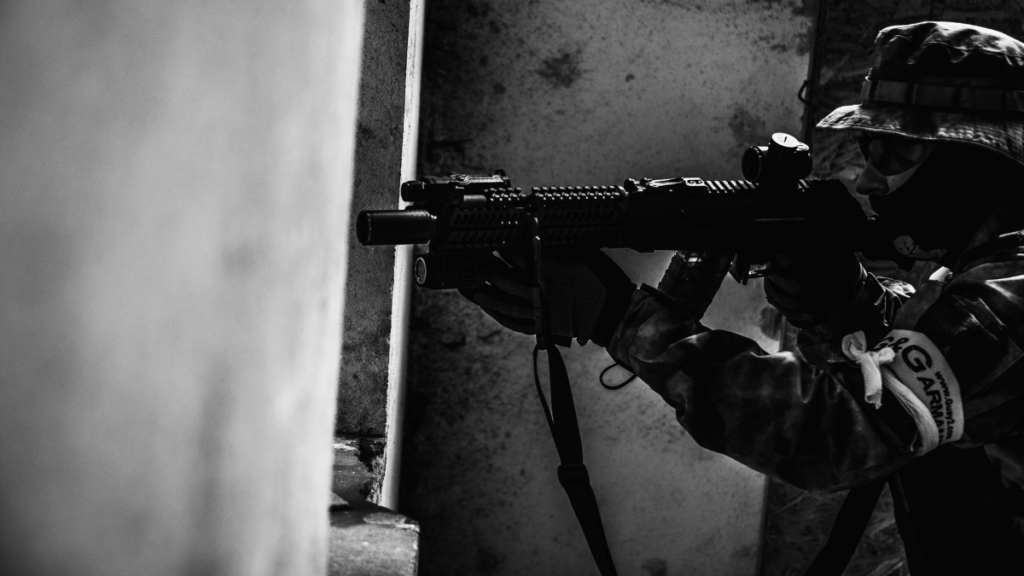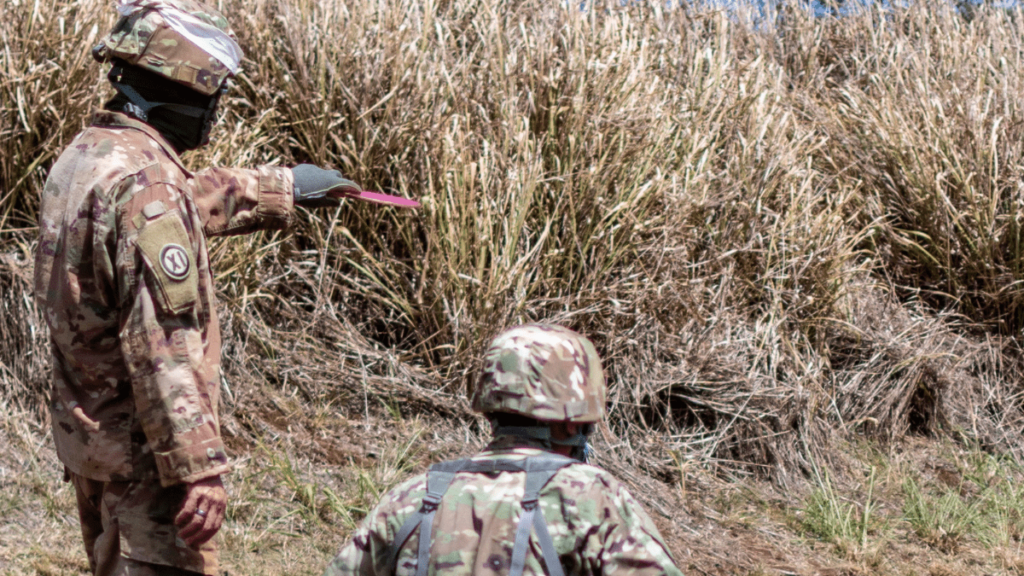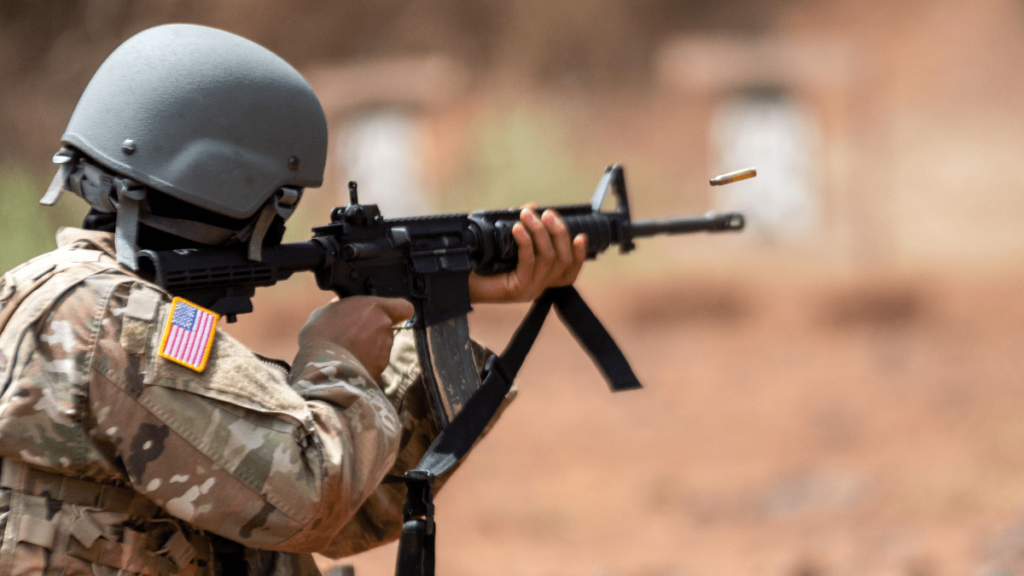Rome wasn’t built in a day, and Simo Hayha didn’t become a master sharpshooter overnight.
Becoming an expert marksman takes time, effort, and patience, but most importantly, it requires a solid foundation upon which to build.
That’s why it’s essential to master the basic marksmanship principles before moving on to more advanced concepts of shooting.
You’re not going to be a master sniper hitting targets a kilometer out until you know how to properly hold and aim your weapon, so take it slow and make sure that you can walk before you can run.
”Once you’ve got your grip and poise down, it’s time to worry about aiming.”
This is where this guide to marksmanship comes in. We intend to explore the 6 principles that underpin marksmanship and help you understand how to embrace them and why they’re so important.
Without further ado, then, we present to you the 6 marksmanship principles essential to any good shooter in an easy-to-digest way.
Your Grip is Crucial
Before you even think about pulling the trigger, you need to make sure that you’re holding the weapon correctly. This is not limited to your grip – your position and grip are also crucially important.

If firing a rifle, this means that the rifle handguard should be grasped lightly in your non-firing hand.
The temptation to squeeze tightly should be avoided, as this can throw your aim off. The butt of the rifle should be placed just above your armpit (not in it); this is in order for you to absorb the recoil of the rifle without the butt striking the interior of your armpit, which is sensitive.
The bottom three fingers of your firing hand should be wrapped firmly around the grip of your rifle just below the trigger.
Your trigger finger should, if ready to fire, be firmly against the trigger and ready to squeeze. This prevents the rifle from jerking to the left or right when the trigger is squeezed.
Firing Position
Finally, the optimal position for firing a rifle is prone. This will aid in steadying the rifle and making as accurate a shot as possible.
In a pinch, firing from a kneeling position is also acceptable but is inevitably less accurate than firing from prone.
Note that firing from a standing position is seldom effective and should be avoided.
Sight Alignment
Once you’ve got your grip and poise down, it’s time to worry about aiming. The first part of aiming correctly is sight alignment, e.g. making sure that you’re looking through your sight correctly.

A misaligned scope doesn’t look like a huge problem from behind the scope itself, but it’s a self-compounding issue that leads to larger and larger accuracy problems the further away your target is.
If you’re firing at a target 300 meters away, for instance, a scope that’s misaligned by a mere 0.1 inches can result in you missing by 5 feet. That might as well be 1,000 feet – a miss, after all, is a miss.
To avoid this, make sure that your front sight is sitting firmly in the center of your rear sight.
You should also focus on the front sight when firing. This can cause the actual target to seem blurry, but this is because you’re focused on the sight rather than the target – which is where you should be focused in order to be firing accurately.
Sight Picture
Another important part of correct aiming is ensuring that you’re looking at a good sight picture. The sight picture is what you see when your front sight, back sight, and target are all aligned.
A good sight picture contains the front and back sights aligned correctly (e.g. the former dead in the center of the latter) and the center mass of your target perfectly in the center of that.
If you’re firing at something smaller (e.g. a bullseye), then your front sight should be slightly touching the bottom of your target.
Breath Control
You can’t hit the target if your breathing is shaky, erratic, or irregular. In fact, you can’t hit the target if you’re inhaling or exhaling at the wrong moment. Breath control is, therefore, crucial when it comes to good marksmanship practices.

There are two ways that you can take advantage of breath control in order to fire the perfect shot.
The first is not to change your breathing in any way but rather to make use of the natural pauses therein in order to time your shot. This means waiting for the moment between inhaling and exhaling in order to fire.
The second involves holding your breath in order to make the shot. This imparts more of a sense of control but, in practice, has much the same effect – you’re firing only when there’s absolute stillness.
Trigger Squeeze
You’re holding the rifle correctly. You’ve aligned your sight correctly and got a good sight picture. Your breathing is in order, and you’re either timing your shot between breaths, or you’re holding it. All that’s left is to take the shot.
Squeezing the trigger correctly is of utmost importance – a mistake here will mean that all your careful work prior to this point will be for nothing.
If you squeeze the trigger too abruptly or tense at the wrong moment, your grip, sight work, and breath control won’t matter at all.
So, how can you ensure that your trigger work is solid?
Firstly, it’s important to note that if you’re expecting the shot, you’re going to tense up. That can’t be helped; it’s a purely unconscious reflex to jump at a loud noise like a gunshot.
To avoid this, you’ll have to take yourself unawares. How can you possibly do that? By applying slow, constant pressure to the trigger.
This pressure means that you’re never quite sure when the shot is going to come, which means that you won’t tense up and miss your shot.
But it also means that you’re not pulling the trigger too quickly, which can result in your pulling the rifle to one side or another.
The Key Marksmanship Principles Are Grip, Position, Sight Alignment, Sight Picture, Breath Control, and Trigger Squeeze
And there we have it – the 6 marksmanship principles that any successful sharpshooter will need before building up any other related shooting skills.
If you can master the marksmanship principles of grip, position, sight alignment, sight picture, breath control, and trigger squeeze, then you’ll soon be pulling off those impossible kilometer-plus shots with ease.
Remember that even the longest journey begins with a single step – and even the greatest sharpshooters in history began with shouldering a rifle correctly. So too, then, must you.

